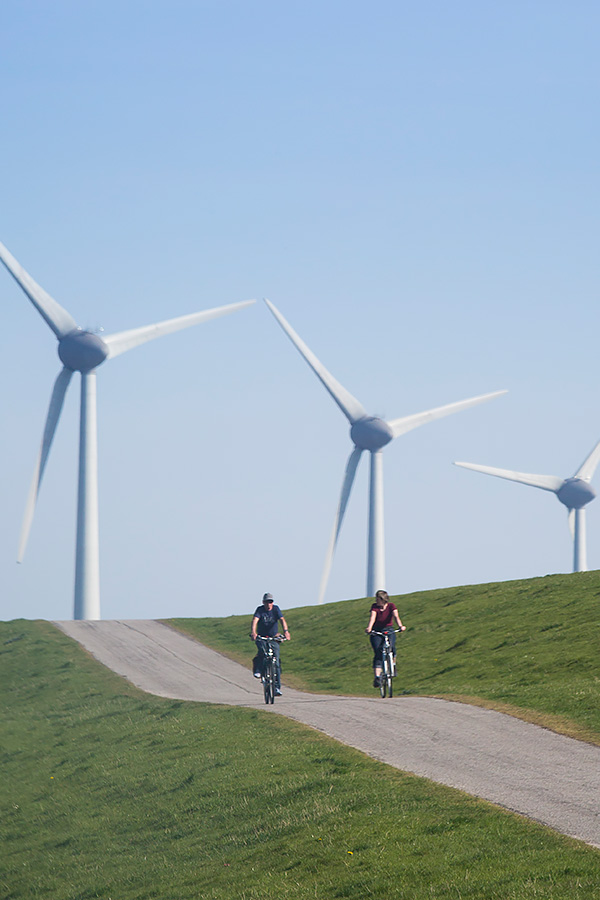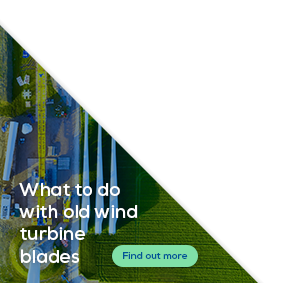Wind delivers the energy society wants
- European citizens and businesses want reliable, affordable and clean energy.
- The geopolitical situation is a stark reminder imported fossil fuels do not deliver that.
- Wind is 20% of the Electricity Europe consumes. It’s cheaper than fossil fuel alternatives, even with the grid and Systems costs. And it’s a completely local source of energy which strengthens Europe’s energy security, resilience and independence.
- Wind expansion reduces Europe’s energy imports and exposure to volatile fossil fuel prices. Thanks to wind, the EU avoids 100 billion cubic meters of fossil fuel imports.
- Wind is scalable, its costs are very predictable, and it helps minimise power bills. It will be central to supplying the affordable energy industry needs to restore their economic competitiveness.
- Wind is an increasingly stable form of power supply. New onshore wind farms now operate at 30-45% capacity factors and new offshore wind farms at 50% +.
- Advances in technology make it easier to manage energy systems with large shares of wind energy. Wind turbines are increasingly flexible: able to operate at lower wind speeds and to be more aligned with energy demand. And they help control frequency and voltage in the grid.
- Digitalisation optimises wind energy output and is improving the design of turbines and wind farms. It’s making it easier to maintain equipment and extend its lifetime.
- Wind power emits zero carbon, SOx, NOx or PM. And consumes hardly any water. The CO2 footprint of wind turbines is negligible: a turbine pays off its lifecycle emissions in 6-9 months of operation.
- The wind industry is constantly improving the materials it uses. 85-90% of a turbine is recyclable. We are working to limit biodiversity impacts and towards full circularity in the wind supply chain. We are committed to recycle, repurpose or reuse 100% of wind blades – no landfilling.
- We are committed to engaging with local communities and to ensure happy coexistence including with military activity, biodiversity and fishing.
- The wind industry is working closely with NATO, European Defence Agency, and Ministries of Defence to protect critical energy infrastructure and support Europe’s defence efforts. Including by using wind farms to increase the Military’ situational awareness for national security. We are working with Governments to enhance the cyber and data security of wind farms.



Wind gives Europeans wider social and economic benefits
- The wind industry is a European success story. It provides 370,000 jobs today rising to 600,000 in 2030, and it’s building new factories.
- Wind contributes €52bn to Europe’s GDP. On average each new wind turbine adds €16m to the European economy. Its 250+ factories are all over Europe including in economically-deprived regions.
- Wind farms bring economic benefits, e.g. €10bn in taxes, to the places they’re located. They provide jobs and investments in local often rural communities. Proactive community engagement ensures that local citizens benefit from their local wind farm e.g. revenue sharing models, and in certain areas, lower power bills.
- With its European supply chain and local benefits wind helps deliver an inclusive and just energy transition. 85% of Europeans support wind energy.
- The industry takes a proactive approach to workforce development in cooperation with Governments, attracting a fresh pool of talent, promoting certification, and encouraging worker mobility. It is committed to help re-skill those who’ve worked in fossil fuels.

Wind will be the backbone of Europe's energy system
- Wind now meets 20% of Europe’s electricity demand and much more in many countries: Denmark 56%; Ireland 33%; Sweden 31%; Germany 30%; UK 30%; Netherlands 29%; Spain 25%. The EU Commission see wind being half of Europe’s electricity by 2050.
- But Europe isn’t building enough wind farms to support its competitiveness and energy security objectives. The EU is set to build 23 GW a year of new capacity over 2025-2030. But it needs to consistently deliver 30 GW a year to deliver the EU energy security and competitiveness objectives.
- The further expansion of wind energy will be driven by new wind farms on new sites. But it also requires significant investment in the repowering of existing wind farms. Nearly half of Europe’s existing wind farms will reach the end of their normal life by 2030.
- The expansion of wind requires (a) progress on electrification; (b) preserving and expanding Europe’s wind supply chain; (c) the right policies, notably on planning and permitting; and (d) the right energy markets and grids.
Electrification
- Electrification is the most cost-effective and energy efficient way to deliver decarbonisation and industrial competitiveness. The EU want electricity to be 57% of all the energy it consumes by 2050.
- And industry want more renewable electricity. Companies in chemicals, steel, ICT, aluminium, transport, pharma, and food/drink are now sourcing power directly from wind farms on long-term supply agreements.
- But Europe has fallen way behind China on electrification. Electricity is less than a quarter of Europe’s energy mix today. And it’s been flat for the last 10 years. This hurts our competitiveness, energy security, and undermines the business case for wind investments.
- Alongside buildings and transport, the electrification of industry is a top priority. It’s key to their competitiveness. Part of industry – pulp and paper, beverages, some chemicals processes – can electrify with heat pumps and electric boilers already on the market today. Starting with this low hanging fruit will give the best value for money.
A competitive supply
chain
- The expansion of wind requires a strong manufacturing base. The EU must recognise the value the European wind supply chain brings to the economy and society;
- The European wind energy supply chain is under pressure as a result of low market volumes and cost pressure due to slow and cumbersome permitting, poor auction design and uncoordinated EU Trade policies.
- A strong industrial policy for wind means:
- market scale: national auction volumes aligned with EU energy targets, underpinned by accelerated permitting;
- the right auction design: technology-specific auctions, indexed to reflect possible increases in commodity prices, avoiding uncapped negative bidding where the industry pays for the privilege of building a wind farm, and simple and harmonised pre-qualification and non-price award criteria;
- open markets so we can import key components and materials and export high value-added finished products, and a level playing field to ensure free and fair competition on the European market;
- Funding and Financing for industrial scale up and infrastructure, grids and ports;
- investing in R&D: continuous research and innovation to optimise today’s technologies, scale-up manufacturing, further digitalise O&M, fully recycle turbines, enhance grid connection and system flexibility; and
- proactive workforce development; qualifications have to reflect industry needs and be recognised across borders.
The right policies
- Applying the EU permitting rules. They work wonders. Germany is now permitting 7x as much onshore wind as 5 years ago.
- De-risking wind investments with a stable pipeline of 2-sided Contract for Difference auctions. 2-sided CfDs improve costs of capital and visibility on revenues and are good value for Governments.
- Removing barriers to electrification. Let industry get State aid to electrify with renewable PPAs, not just for onsite power. Remove non-energy taxes and charges from electricity bills so renewables become an obvious choice for consumers.
- Avoiding abrupt and uncoordinated energy market interventions that undermine investor confidence and put the accelerated deployment of wind at risk.
- Robust CO2 prices driven by the ETS consistent with a 90% 2040 Climate target.
The right energy
markets and grids
- Europe needs better grid planning 15 years out - in-country and across borders - anticipatory investments, and a dynamic management of grid connection queues to filter out zombie projects that clog up the system.
- System operators must deal with short-term bottlenecks to minimise curtailment and grid connection delays. And the regulatory framework must support the development and introduction of new grid and system integration technologies.
- The lack of reliable information on congestion and available grid capacity is slowing down renewables deployment. Authorities must regularly publish data on grid congestion, curtailment and available capacity for new connections.
- There must be full and equal access for renewables to ancillary services markets. Rewards for flexibility including demand response, storage, inertia and fast frequency response. And more dynamic and larger intraday markets, common balancing platforms and products to cover wider trading areas.
- Energy planning must ensure a balanced technology development – wind and solar - and fully leverage the potential of storage, demand response, cross-border capacity and other non-fossil flexibility resources including via climate proof capacity remuneration mechanisms.

